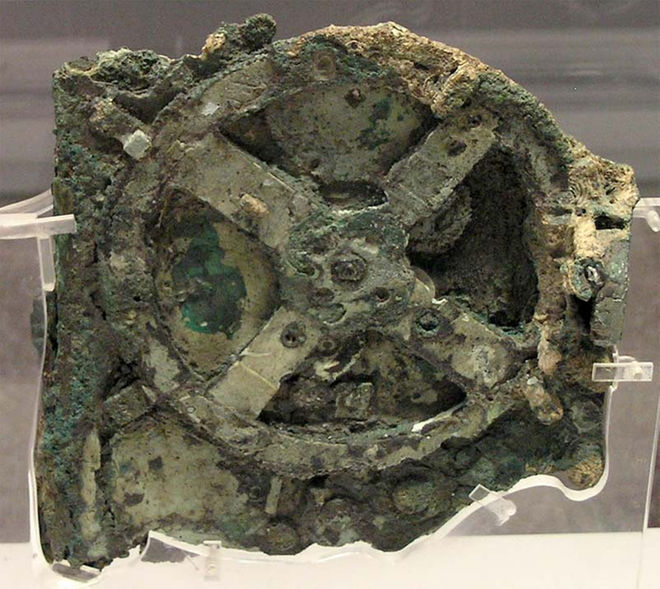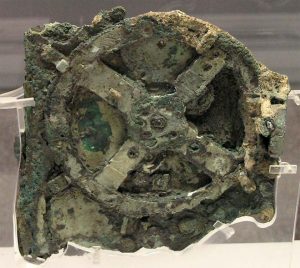Thanks to high-tech scanning, 2,000-year-old inscriptions on the Antikythera mechanism, an ancient Greek “computer,” can be read more clearly than ever before, revealing more information about the device and its possible uses.
Ever since the first fragments of the device were pulled from a shipwreck off the coast of the Greek island Antikythera in 1901, scientists and historians have been trying to learn more about its purpose. The bronze astronomical calculator was about the size of a shoebox, with dials on its exterior and an intricate system of 30 bronze gear wheels inside. With the turn of a hand crank, the ancient Greeks could track the positions of the sun and the moon, the lunar phases, and even cycles of Greek athletic competitions.
The 82 corroded metal fragments of the Antikythera mechanism contain ancient Greek text, much of which is unreadable to the naked eye. But over the past 10 years, new imaging techniques, such as 3D X-ray scanning, have revealed hidden letters and words in the text.
Read more at http://www.livescience.com/55168-antikythera-mechanism-had-user-manual.html


